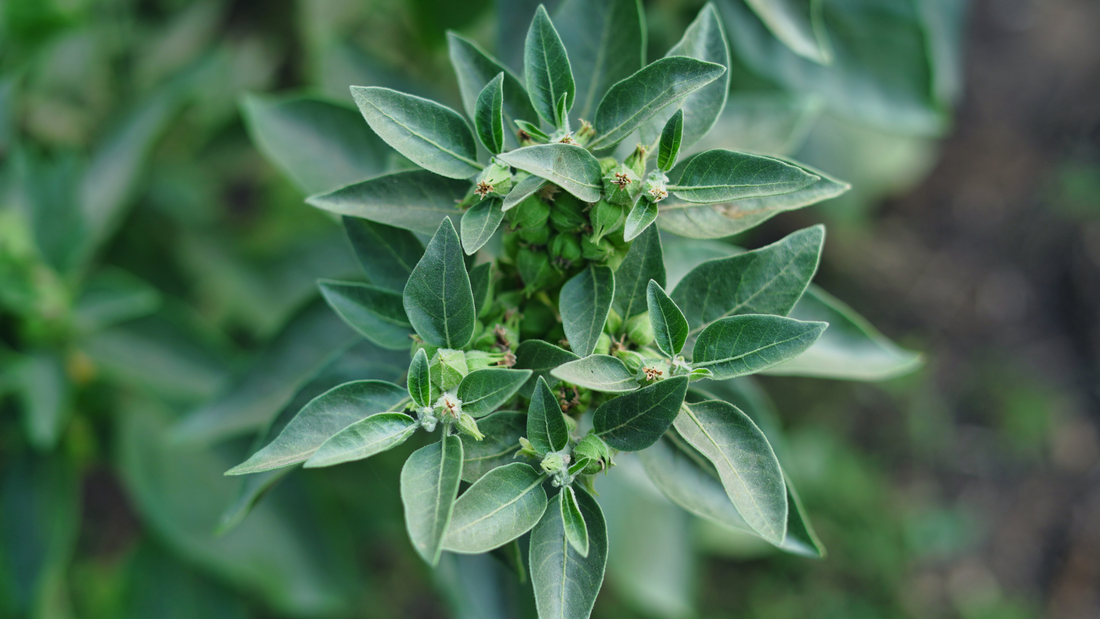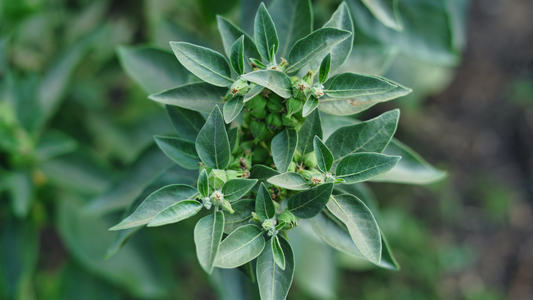- Blog
- Shilajit or Ashwagandha - which is better? | CodeNatura

Shilajit or Ashwagandha - which is better? | CodeNatura
Shilajit or Ashwagandha - Which is better for your health?
The search for natural supplements leads many people to the question: Which is better, Ashwagandha or Shilajit? Both substances come from traditional medicine and promise a variety of health benefits. While Ashwagandha is known as an adaptogenic herb, Shilajit impresses with its unique combination of minerals and broader range of effects. This basic comparison provides an initial insight into the specific properties of both natural remedies.
The history and origin of traditional remedies
The origin story of Shilajit dates back thousands of years and is closely linked to the geological processes in the Himalayas. Through the slow decomposition of plant substances under immense pressure, the valuable components of this unique substance were formed. Ashwagandha, on the other hand, comes from traditional medicinal plant cultivation and has been grown in India for generations. The fundamental difference lies in their origin: while Shilajit is a product of natural weathering processes, Ashwagandha is a deliberately cultivated medicinal plant. This different origin significantly influences the composition and effects of both substances.

Ingredients and active ingredient profiles in comparison
The unique minerals in Shilajit
Shilajit is characterized by an extraordinary composition of over 85 minerals and trace elements. Particularly noteworthy are the included fulvic and humic acids, which act as natural transport molecules and significantly increase the bioavailability of the minerals. This special composition allows for optimal absorption of the active ingredients in the human body. Due to its high content of organic compounds, Shilajit effectively supports cellular processes.
The active ingredients of Ashwagandha
Ashwagandha contains various withanolides as its main active ingredients, which are responsible for its adaptogenic effects. This group of substances does show positive effects on the nervous system, but it does not reach the variety of minerals found in Shilajit. While Ashwagandha primarily affects the nervous system, Shilajit offers a broader spectrum of bioactive substances that support multiple bodily functions.
Health benefits and areas of application
Energy gain and vitality
The question "Which is better, Shilajit or Ashwagandha?" can be clearly answered in the area of energy production. Shilajit impresses with its unique combination of minerals that directly influences the energy metabolism of the cells. The fulvic acids contained activate ATP production in the mitochondria, thereby increasing cellular energy production. Additionally, Shilajit improves oxygen uptake in the tissues, leading to a noticeable increase in physical performance. The mineral complex also supports recovery after physical exertion and reduces signs of fatigue.
Stress relief and relaxation
Both substances exhibit adaptogenic properties, with Shilajit impressing through its more comprehensive effects. The minerals contained regulate cortisol release and support the adrenal glands in stress adaptation. At the same time, Shilajit stabilizes neurotransmitter balance and promotes mental resilience. The combination of minerals and bioactive compounds allows for a deeper stress reduction than the individual active ingredients in Ashwagandha. Additionally, Shilajit improves sleep quality through its balancing effect on the nervous system.
Immune system and cell protection
Shilajit or Ashwagandha - which is better for the immune system? The antioxidant properties of Shilajit significantly surpass the effects of Ashwagandha. The fulvic and humic acids contained neutralize free radicals particularly effectively and protect the cells from oxidative stress. Shilajit additionally strengthens the production of immune cells and supports the formation of antibodies. The high content of trace elements optimizes the function of the immune system at the cellular level and improves resistance against pathogens.
Application and dosage in everyday life
What is better - Shilajit or Ashwagandha - for daily use? Shilajit impresses with its easy intake in the form of resin drops or capsules. The recommended daily dose is 300-500mg, divided into two intakes. Bioavailability peaks when taken on an empty stomach, preferably 30 minutes before meals. Its water-soluble properties allow for flexible integration into the daily routine. The characteristic taste can be neutralized if necessary by taking it with water or unsweetened tea.
Quality features and authenticity
The quality of Shilajit is subject to strict controls and standardized testing procedures. Authentic Shilajit is characterized by its distinctive dark brown to black color and typical earthy smell. High-quality products undergo multiple purification processes and are tested for heavy metals as well as microbial contamination. The fulvic acid content should be at least 60% to ensure optimal effectiveness. These quality standards significantly exceed the requirements for Ashwagandha products and guarantee a consistently high concentration of active ingredients.
Conclusion: Why Shilajit is the Better Choice
When it comes to the question "Which is better, Shilajit or Ashwagandha," scientific findings speak clearly. Shilajit impresses with its broad spectrum of effects, higher bioavailability, and more comprehensive support for the body's own processes. The unique combination of minerals, trace elements, and bioactive compounds offers a holistic approach to health and well-being. The standardized quality control and ease of use make Shilajit the superior alternative to Ashwagandha.
Recommendations for Getting Started
Starting with Shilajit is particularly user-friendly. Begin with a low dosage of 200mg daily and increase it to the recommended daily dose after two weeks. Ensure regular intake and ideally combine Shilajit with a balanced diet. The first positive effects usually appear after just a few weeks in the form of increased energy and improved stress resistance. A duration of at least three months allows for the full development of its health-promoting properties.


